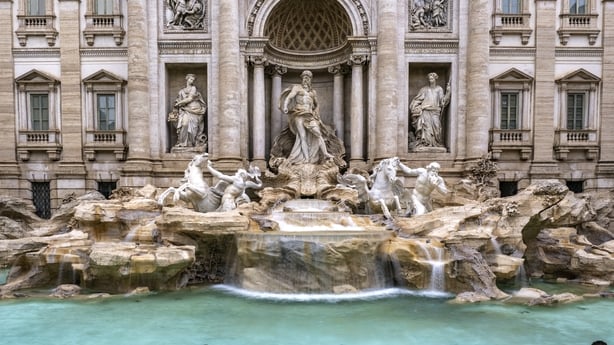Today, students sat Business as well as Art: Visual Studies. We have two teachers from The Institute of Education giving their reaction to the exams.
In the video above, Keith Hannigan discusses Business (H), while Declan Kelly has a written blog on Art: Visual Studies (H).
Keith says it was "a paper that drew on the familiar but asked students to think on their feet."
Key takeaways
- Students will recognise the majority of the questions from previous papers and be pleased with those questions that took a more desirable approach to topics.
- However, the occasional new question would have challenged students to think on their feet and maybe alter their plan for how to approach the later sections.
Download the exam papers at examinations.ie.

Declan says it was "an accommodating paper whose transparent questions encouraged higher-order thinking"
- Questions synthesized literacy of artworks with their lived reality.
- Fair and open-ended question posed no artificial barriers to displays of knowledge.
Download the exam papers below:
Leaving Cert Picture & Illustrations (H)
The new Art exam, now in its sophomore year, will be welcome by students and teachers alike. The exam setter has clearly carefully considered reactions to last year's debut and presented students with a paper that should accommodate a wide range of abilities. Students had more clarity entering the exam has this year compared to last year and would have been primed to the demands of this new paper.
Section A asked students to display their knowledge of the language of art elements and the principle of design. Question 1 on Ann Quinn’s "Meenagrauv" asked them to verbalize organizational aspects of an intuitively graspable image of rural dereliction. The concepts of composition, perspective and colour would be immediately apparent and those familiar in discussing these will be happy. This approach was found throughout this section, whether it was the perspective in Sinead Wall’s "Rosmoney" print or the organic lines of Mette Roche’s "Aran Noaide".
In each case an analytic approach was paired with a reflection on the nature of how art fits within the world. Students were asked to consider what is meant by a "successful career" in art, the advantages of print editions and what makes an exhibition popular to the general public. The latter had ambiguity baked into the question and so students could take any number of position but needed to justify them. If this kind of philosophical reflection is a model for future exams, it is to be applauded.
However, it should be noted that there were some questions asked on topics that might not be familiar to everyone. If a student had not discussed printing in their class due to either their facilities or their teacher’s preference, their scope might be more restricted. That being said, everyone should be able to find five questions from the seven that suited them.
Section B on Europe and Wider World will have delighted many. Question 8 on Gothic Cathedrals was a super-straightforward, classic Leaving Certificate question. Question 9 on perspective in the Renaissance cut right to one of the central principles of that section of the course. It lay at the heart of the studied material, so students would be very familiar with what was asked. Question 10 on the Baroque was great but had the added challenge of discussing patronage "across Europe" and so students needed to go beyond Bernini to unlock the full spectrum of marks.
Those who brought in artists from the lowlands will have been able to add variance while sticking to essentially the same talking points. Those students who visited the "Turning Heads" exhibit in the National Gallery will have seen firsthand the brilliant breadth of material to address. Question 11 was very generous in allowing the "and/or" choice between discussing class and gender in Realism, Impressionism and Post-Impressionism. The main issue with this part of the course is the massive span encompassed in these three movements, but the capacity for the student to choose their own avenue of approach would have helped them navigate this.
Later, Section 3 on "Ireland and its place in the wider world" would provide students with six reliable and transparent questions. These were all fair and open-ended, offering no artificial barrier to those hoping for a chance to display their knowledge. As always, students needed to be methodical in addressing all elements of the question but what was required was clearly identified. For example, Question 14 on "stone carving and metalwork" allowed students to combine material on the Neolithic, Bronze Age and Iron Age as they saw fit but reminded them that context is a vital part of the discussion. As such if students mentioned two ages, they needed to mention two contexts. This would be challenging to a weaker student but a fabulous opportunity to show off for the strong ones.
If this is the model of what will appear in the future, everyone should be happy.
Make sure to take some time to rest and recharge every day. You can see some great tips for sleeping, eating and de-stressing here.
